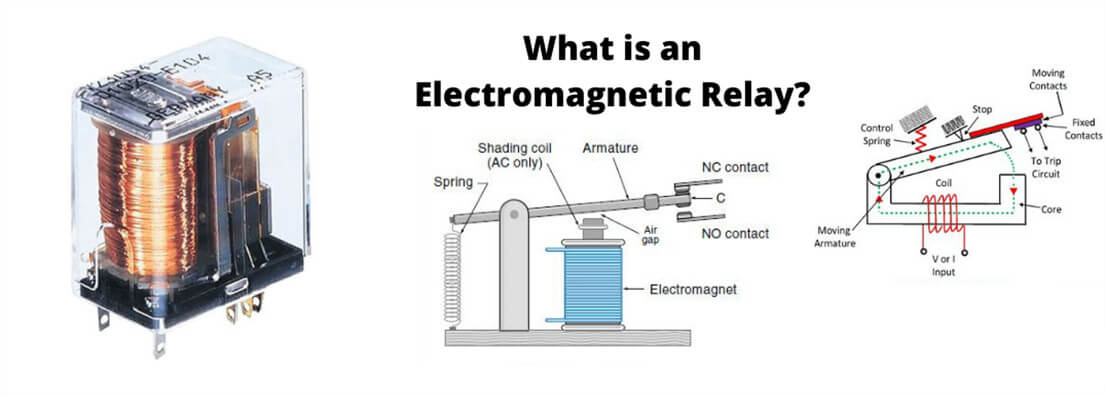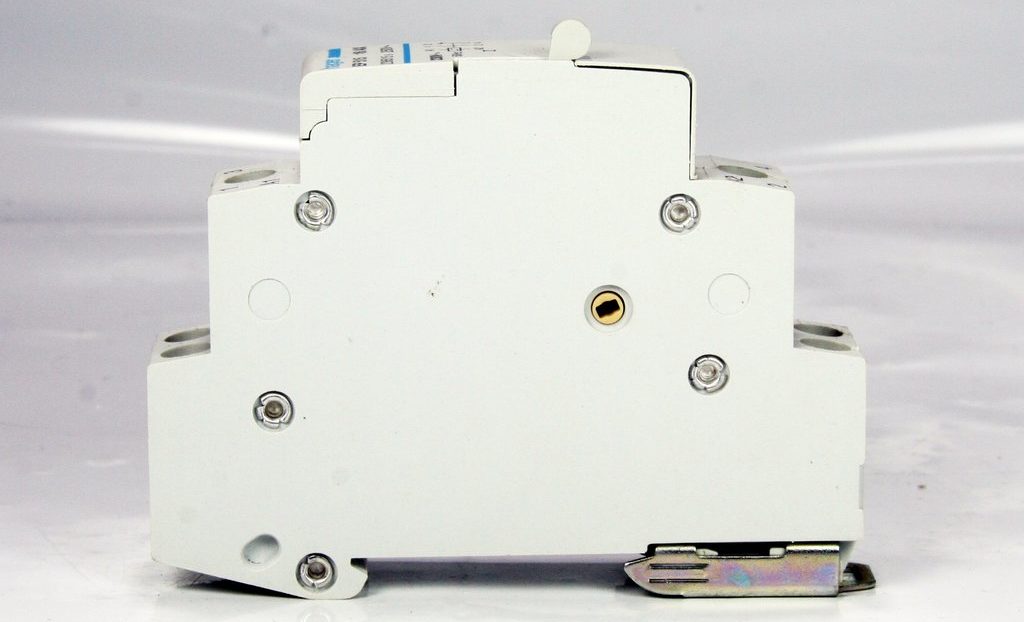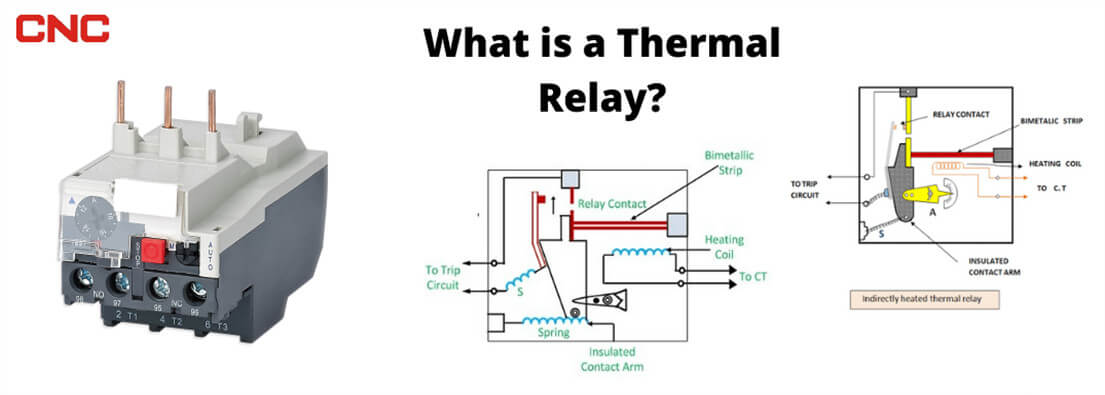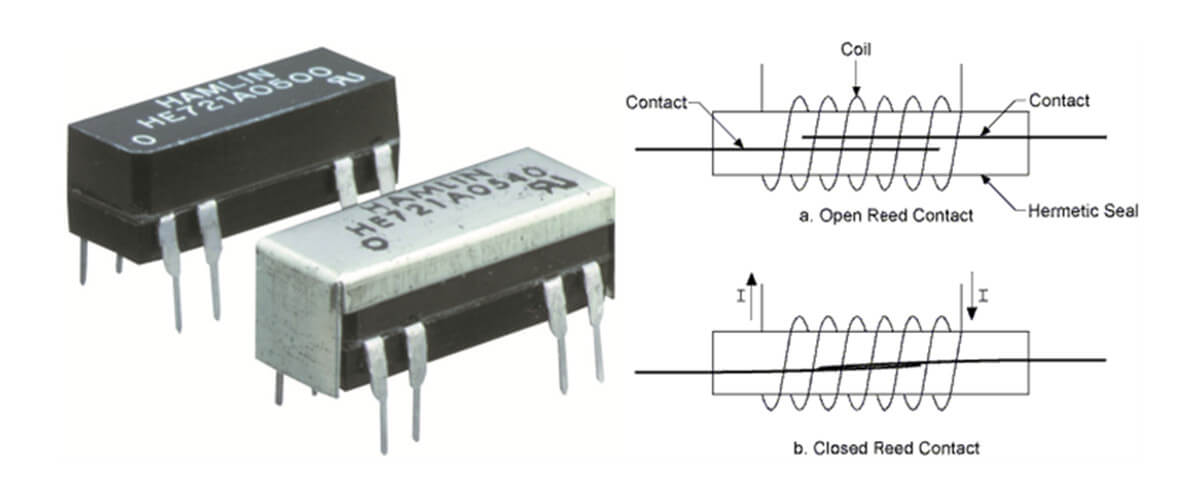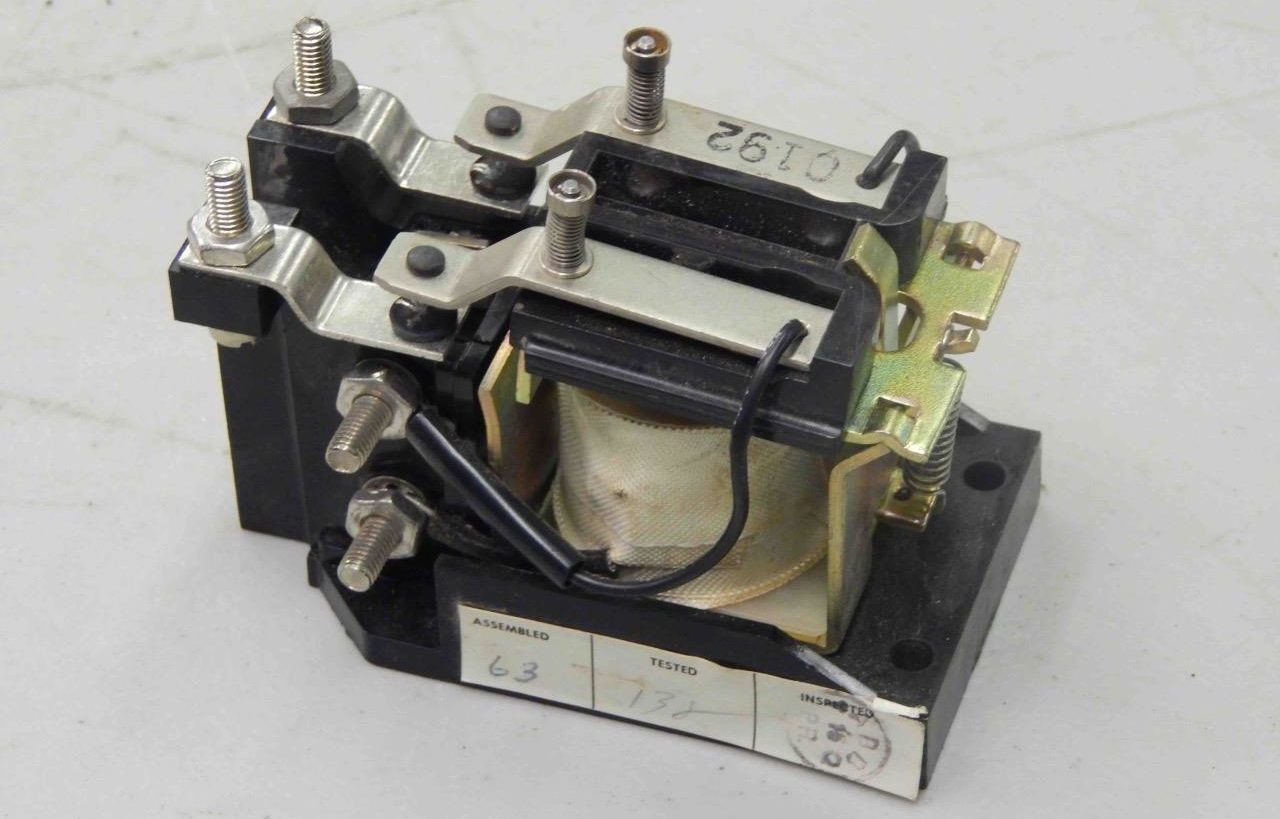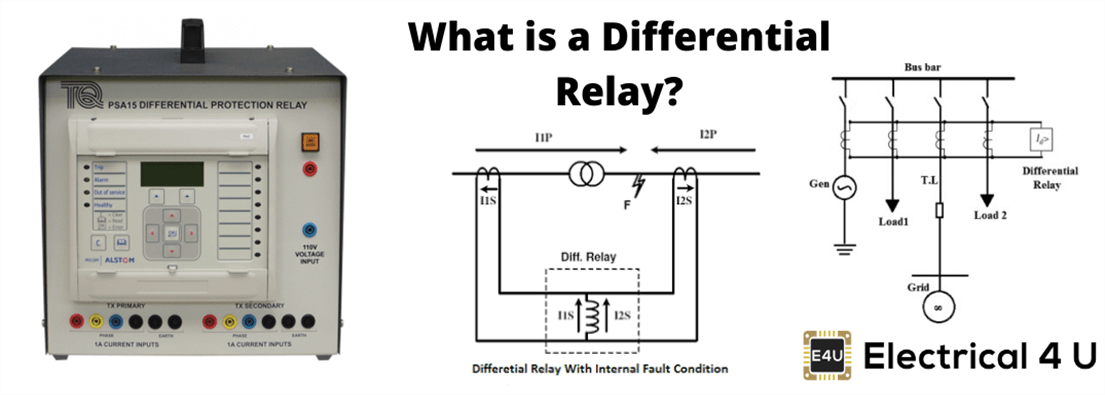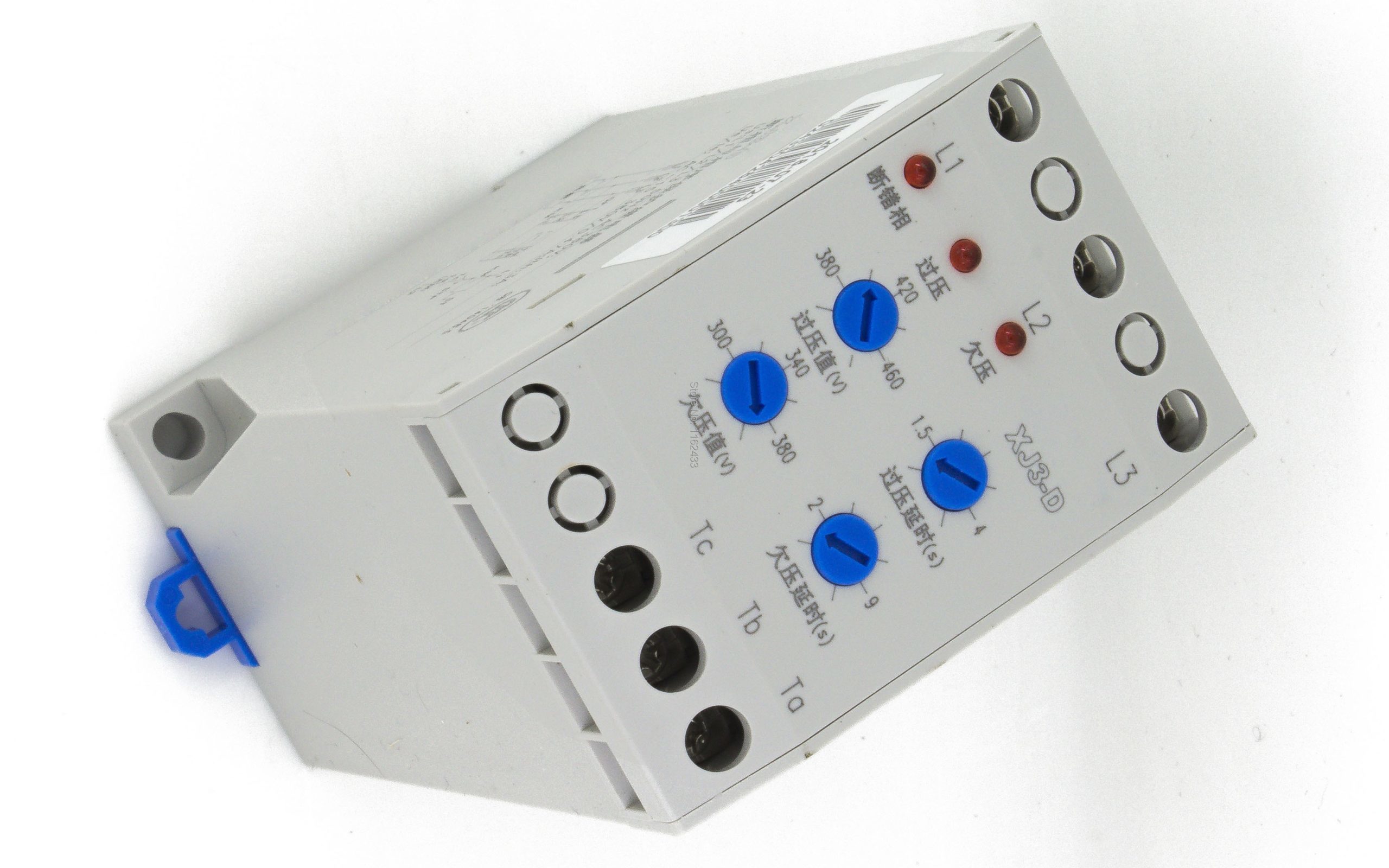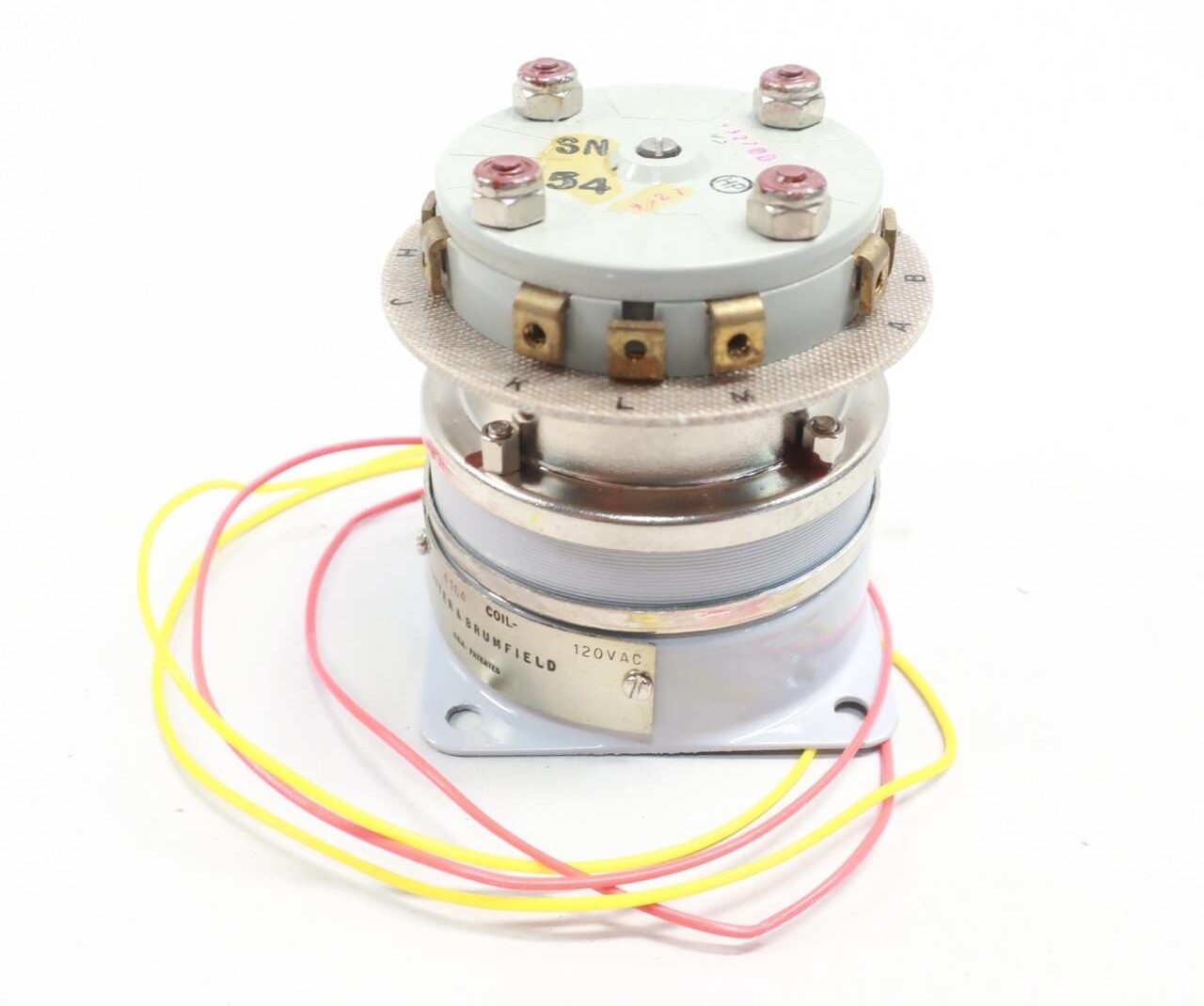Electrical relays are one of the most frequently used devices in modern technological systems. It can be found in cars, washing machines, microwave ovens, medical equipment, as well as tanks, airplanes and ships. In fact, no industry can operate without a relay. In some complex automatic control systems in the industry, the number of relays is estimated to be hundreds or even thousands. In the power generation industry, no power equipment is allowed to operate without special protective relays. Certain electrical equipment, such as power transformers, may be protected by several different types of relays, each of which controls different functions.
Although relays have a wide range of uses and many types, most engineers are not familiar with most of them. After reading this article, you will have a basic understanding of relay types.
1. Electromagnetic relay
Electromagnetic relay is the simplest, oldest and most widely used relay. Its basic components are coils, magnetic cores, armatures, springs and contacts. The magnetic system is used to convert the input current into the mechanical power required for contact closure. The contact system converts the input mechanical energy into electrical signals. The insulation system provides galvanic isolation between the input circuit (winding) and the output circuit (contact).
2. Latching relay
A latching relay is a relay that is picked up under the influence of a single current pulse in the winding and maintains this state when the pulse stops affecting it, that is, when it is locked. Therefore, the relay functions as a storage circuit. In addition, the latching relay helps reduce power consumption in the application circuit, because the coil does not need to be charged all the time.
3. Thermal relay
Temperature relays or thermal relays belong to the second (and possibly even the first) most popular type of dedicated electrical relays. There are two basic types of such devices: relays that input excitation in the form of heat and relays that input excitation in the form of current. The first type of relay is suitable for direct temperature control of different units. The second type of relay is used as a protection relay to prevent current overload and is suitable for various electrical users. In the latter case, the current is first converted into heat inside the relay, and when the temperature of the internal thermal element reaches a certain value (the relay is energized), it becomes an output electrical signal.
4. Reed relay
Many engineers have encountered primitive contact elements in glass enclosures. However, not everyone knows that reed relays are different from ordinary ones not because of the germetic shell (sealed relays are not necessarily Reed’s), but because of the fact that reed relays, a magnetic material made of a thin steel plate act as a contact, Magnetic system, spring at the same time. One end of this board is fixed, and the other end is covered with some conductive material, which can move freely under the action of an external magnetic field. The free ends of these two plates point to each other and overlap by 0.2 to 2mm, forming the basis of a new type of switchgear.
5. High voltage relay
The rapid development of electrical technology applying high voltage (power laser, industrial accelerator, high-frequency metal and medium heating, etc.), the use of power electronic equipment (radar, TV and radio transmitter) operating under high voltage, for different voltage levels The need for insulation test systems for electrical equipment is the reason for the popularity of high voltage (HV) relays operating at voltages of 5 to 300 kV and higher. Such relays can be divided into two categories: high-voltage insulated relays for all load current components, and low-voltage and high-voltage insulated relays between the input element (control coil) and the output element (contact).
6. Time Relay
In addition to electrical relays, the most widely used relay is the “time relay”. Under normal circumstances, these relays have a certain delay corresponding to the signal used for the relay input, which is why the term “delay relay” is often used. Since the state change of the relay is accompanied by a certain delay of the signal applied to its input terminal, it can be said with certainty that, in addition to other functions, each relay also has the function of a time relay. The stability of automatic control systems can sometimes be enhanced by incorporating standard electromechanical relays. Their only function is to provide a specific signal delay whose value is equal to its own make delay. From an engineering point of view, “time relay” or “time delay relay” is usually defined as a relay that takes a time delay function as the mainstay and enhances the characteristics of the function in some way.
7. Current and voltage relay
These relays are specifically designed to control current or voltage levels in high-voltage and low-voltage circuits, and are used to generate specific output signals when the current or voltage level deviates from a predetermined value. Such relays are also called “measuring relays” because they continuously measure the level of execution values during operation. Usually, the output signal of this kind of relay will affect the power shutdown device and cut off the load, thereby protecting it (or the main power supply) from damage in the emergency mode, which is why this kind of relay is also called “protective relay”.
8. Differential relay
Differential protection locates the fault by comparing two (or more) currents; this is actually current protection. Compared with other types of protection, differential current protection has absolute selectivity, because it can work smartly only when the fault occurs in the protection area, and not at all when the fault occurs outside the protection area. Work. The area of the differential relay is limited by a part of the circuit between the current transformers (CTs) to which the relay is connected. Due to the high selectivity of the protection, the relay pickup does not require activation delay, which is why all differential relays are high-speed. Therefore, the differential protection has extremely high selectivity and operating speed.
9. Distance relay
An actuator that functions when predetermined circuit admissibility, impedance, or reactance is exceeded. If each relay installed along the line has a time delay, depending on the impedance (distance), the relay picked up first is always the one closest to the short-circuit point. Distance protection aims to achieve this. In a two-way power supply circuit, the distance protection is directional.
10. Frequency relay
The decrease in frequency is due to the overload of the power system, and the increase in frequency is evidence of excess power. When one or several hard-loaded lines suddenly fail, there will be excess power in the system. Excess power is directed to other lines, causing dangerous power flow, which may cause the power system to collapse. This is why controlling the voltage frequency is so important. Like other parameters of the circuit, the frequency is controlled by a special relay.
11. Polarized relay
Polarized relay is a direct current (DC) electromagnetic relay, plus a permanent magnetic field source that affects the armature of the relay. This additional source of magnetic field (called “polarization”) is usually produced in the form of a permanent magnet.
12. Microprocessor-based relay
A microprocessor-based relay is a small computer whose output circuit has matching parameters with external current and voltage transformers. Programming can be done in memory, allowing the operation of any protective relay to be modeled based on input signals. With the help of a basic general-purpose microprocessor, one can create any relay by making some specific modifications to the program, at least in the initial stages of the development of microprocessor-based devices.
13. Sequence relay
Sequence relays are sometimes called alternators, step relays, step relays, triggers, or pulse relays. The relay has the ability to open and close contacts in a predetermined sequence. All sequence relays use a ratchet or catch mechanism to change the state of their contacts through repeated pulses to a single coil. Usually, but not always, one pulse will close a set of contacts, the next pulse will open them, and so on.
14. Rotary relay
A rotary or motor-driven relay is a relay in which the forward movement of the armature and contacts is replaced by a rotary motion. In fact, this is a standard electromagnetically driven multi-contact rotor switch, not a manual one.
15. Moving Coil Relay
This type of relay has a rather unusual external design, sometimes resembling a vacuum tube or measuring device. Naturally, this relay is similar to a measuring device because, in fact, it is a highly sensitive measuring mechanism with very sensitive contacts. The function of the device is based on the interaction between the magnetic field of the permanent magnet and the current in the winding. The winding is wound on a rectangular light aluminum tube (frame) placed in the gap between the permanent magnet and the iron core ring.
16. Target annunciator relay
A signal relay (target relay, signal relay, or flag relay) is a device with no automatic reset, which indicates the status of a protection device, but does not function automatically. and can also be arranged to perform the lock function. In other words, the target relay is used in relay protection and automation systems as an indicator for other relays to pick up.
17. Flash relay
The flash relay (or flasher) is used to generate the flickering light of the signal lamp. Because of this flicker, it will attract more attention than a permanently turned on lamp. This relay is widely used in the control of a single signal lamp and a component of a multi-valve signal board.
18. Buchholz relay
Buhertz relays are used to protect equipment immersed in liquid, by monitoring the equipment for abnormal flow or no gas or abnormal formation of gas (most of the failures of oil-filled power transformers are accompanied by the production of gas). These relays are usually used in transformers with expansion tanks. They collect the gas that is gradually released due to small internal problems (such as poor connection, small arcs, etc.) until the gas volume operates a switch, and then sends out an alarm signal. Once the gas is collected and analyzed, the problem can be identified.
19. Safety Relays
Electrical relays contain many components, which are affected by power, electrical or thermal wear. In many applications, safety is very critical, and the use of electrical equipment is very important to ensure that during the fault indication cycle, when a fault is detected by the moving relay contact, no dangerous machine movement will occur. In order to ensure the safety function, especially in the event of a failure, proper control is built into the circuit of the safety device. The safety relays that force the contacts play a decisive role in preventing accidents in machines and systems.
20. Ground fault relay
A ground fault relay is a device that trips the power supply when current flows to the ground. Therefore, it can provide protection against harmful electric shocks and provide a path to the earth in the case of human contact with a live circuit. Typical examples of this situation are the use of defective wires and defective appliances.
21. Supervisory relay
The main purpose of this relay is to continuously monitor the normal use of important equipment (or important power parameters applied to this equipment). The trip coil and power supply of the high-voltage circuit breaker in the power grid; the sensor power supply circuit of the fire alarm system; the phase sequence and phase loss of the motor power supply; the insulation level of electrical equipment, etc., these units and parameters are concerned. Monitoring relays can also detect interruptions, high resistance caused by poor current connections, increased contact transfer resistance, control contact welding, control voltage loss, and voltage failure of the relay itself.
22. Solid state relay
It is an electronic relay designed as a single epoxy resin molded solid state module (usually, optically coupled). It is used for fast switching applications.
23. Power factor relay
A relay that works when the power factor in the AC circuit is higher or lower than a predetermined value. It is used for power factor correction applications.
